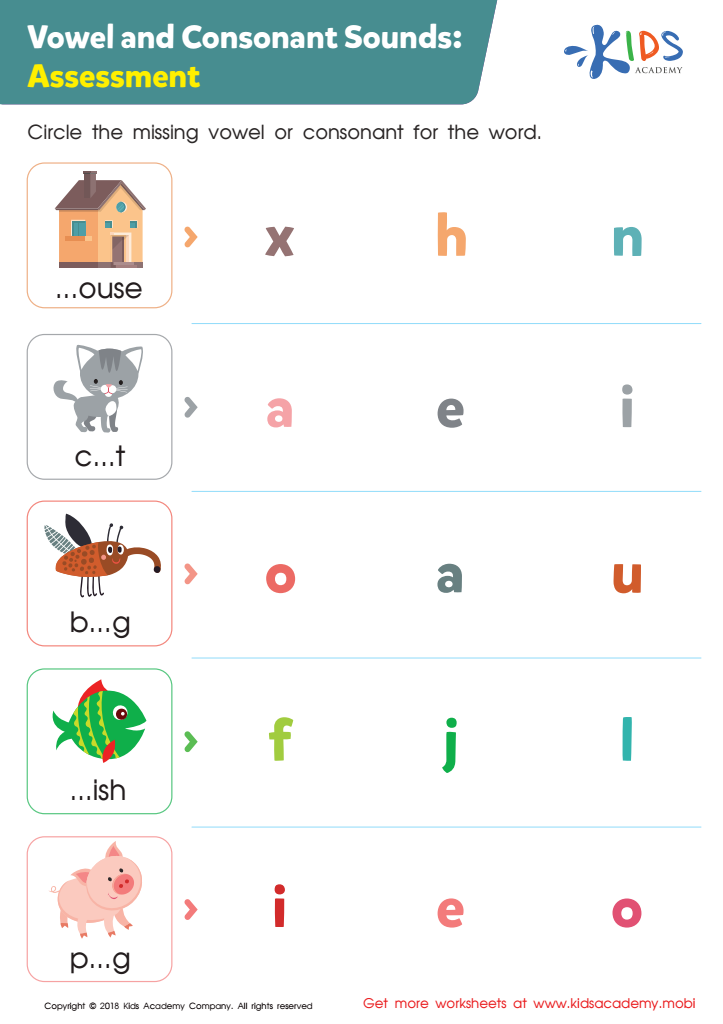Vowels and Consonants worksheets activities for Ages 4-6
1 filtered results
-
From - To


Vowel and Consonant Sounds: Assessment Worksheet
Vowels and Consonants worksheets activities are a fundamental component of phonics instruction, providing a structured approach to teaching the basic building blocks of the English language. These activities are designed to enhance literacy skills in learners of all ages, from young children who are just starting to recognize letters to older students and adults who are improving their reading and writing abilities. Here are several reasons why Vowels and Consonants worksheets activities are incredibly useful in educational settings.
Firstly, these worksheets offer targeted practice. Understanding the difference between vowels and consonants is crucial for decoding words, and through repeated practice, students can internalize these differences. Vowels and Consonants worksheets activities provide a variety of exercises that reinforce this fundamental distinction, from simple identification tasks to more complex word-formation challenges. This targeted practice helps students solidify their understanding and use of these letter types in real-world reading and writing contexts.
Secondly, Vowels and Consonants worksheets activities cater to individual learning paces. In a classroom setting, learners may progress at different speeds. Worksheets can be used flexibly, allowing educators to provide additional practice for students who need it while enabling more advanced learners to move ahead. This adaptability ensures that all students receive the appropriate level of challenge and support.
Thirdly, these worksheets support the development of phonemic awareness. Phonemic awareness is the ability to hear, identify, and manipulate individual sounds in spoken words. Activities that focus on vowels and consonants encourage learners to pay attention to the sounds within words, a skill that is essential for both reading and spelling. Through engaging with these worksheets, students can improve their phonemic awareness in a fun and interactive way.
Lastly, Vowels and Consonants worksheets activities are versatile educational tools. They can be used in a variety of settings, including classrooms, homeschool environments, and tutoring sessions. Whether as part of a structured lesson plan or for independent practice, these worksheets can be adapted to meet diverse educational needs and goals. Their versatility makes them an invaluable resource for educators and learners alike.
In conclusion, Vowels and Consonants worksheets activities are not only practical but also an essential part of phonics instruction. They offer targeted practice, accommodate individual learning paces, improve phonemic awareness, and boast versatility, making them a linchpin in developing literacy skills.
 Assign to the classroom
Assign to the classroom












